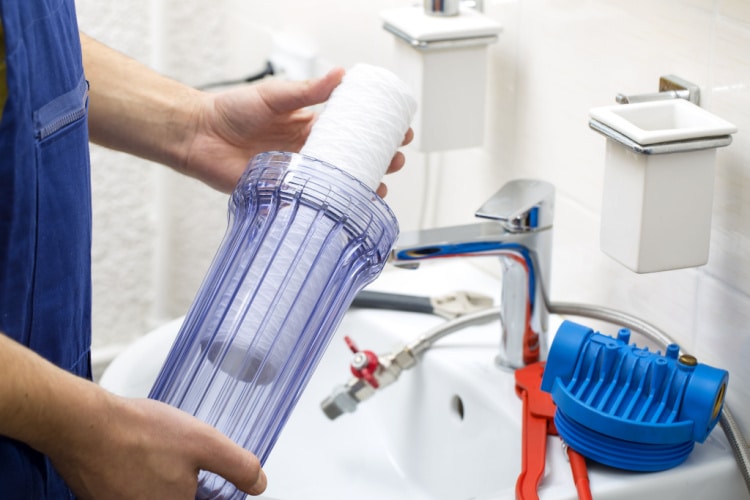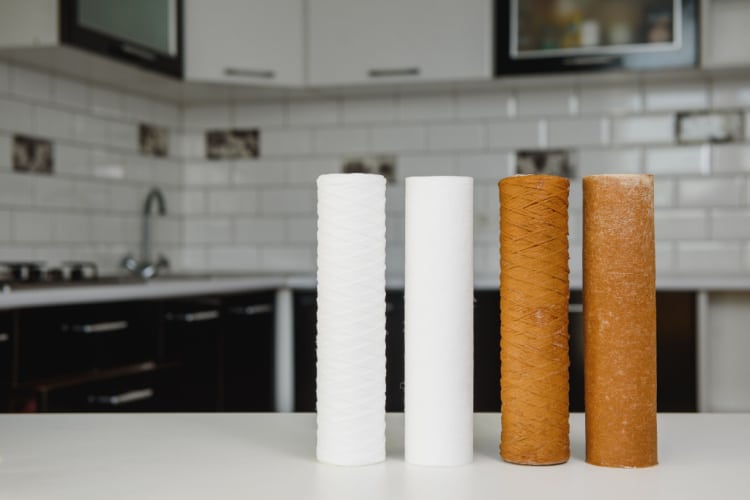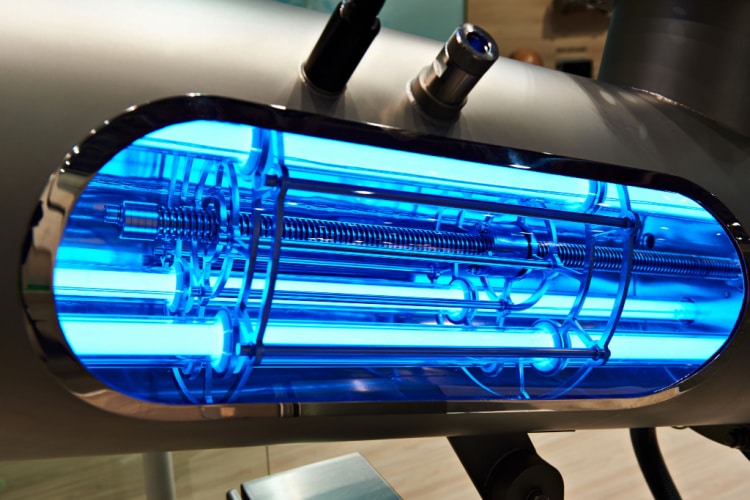Water softeners remove calcium and magnesium minerals in water but are less effective against non-hard water minerals. This is where pre-filters are helpful. Carbon pre-filters are often installed alongside a water softener to remove contaminants and sediments before the water is softened by the water softener.

The Importance of Water Softener Pre-filter
Pre-filter acts as the first layer of filtration to purify the water and prevent the water softener system from contamination.
Water softeners use a process known as ion exchange. In this process, negatively charged resin bead attracts positively charged molecules of calcium and magnesium minerals. These molecules are then filtered by a media bed (or a primary filter) and flushed out of the system.
However, sometimes there’s too much sediment, dirt, clay, bacteria, fungi, or a high concentration contaminants like chlorine and chloramines in the water, which a water softener can’t remove. As a result, bacteria and fungi may clog and start breeding inside the softener which would have long-term effect on the system’s performance. Also, an over-concentration of chlorine in the water may oxidize the resin beads and reduce its lifespan by half.
This is why installing a pre-filter for your water softener can be very beneficial.
What Pre-Filter Removes:
A pre-filter is most commonly used to remove:
- Undissolved contaminants: Sediment like dirt, rust, and sometimes even mud may find its way to the water softener device.
- Chemical contaminants: City water is usually treated with chlorine and chloramines to prevent bacterial and viral growth. However, sometimes these chemicals are not properly filtered before they’re distributed to homes.
- Bacteria and fungi: No matter how much maintenance is done, there’s always the possibility of bacterial and fungal growth in private wells. Not only do they contaminate water and pose health risks, but they also cause water softeners to function ineffectively.
Types of Pre-Filters
There are three different types of pre-filters that remove different sets of contaminants:

- Sediment filter: A sediment filter is only effective against large and insoluble (suspended or undissolved) particles. Depending on your piping system and the quality of water in your area, these particles may vary from dirt and sand to fungi and rust.
- Activated carbon filter: Activated carbon filters are utilized as pre-filters in reverse osmosis and whole house filtration systems. They’re effective at removing chlorine and other dissolved particles like TDS (total dissolved solids), VOCs (volatile organic compounds), pesticides, herbicides, and heavy metals.
Do I Need a Sediment Filter With a Water Softener?
You should consider installing a sediment pre-filter if you notice cloudy or colored water from the faucets, despite the fact that your water softener is working properly. Also pay attention to drop in water flow rate which could indicate sediments clogging the pipes or water softener system.
We recommend you to first test your water to determine the level of contamination. You can test your water by either purchasing a home water testing kit or sending a water sample to an EPA-certified water testing laboratory.
What About Water Softener Post-Filter?
Some water softeners have the option to also install a post-filter. The post-filter is usually a UV filter that kills pathogens like bacteria, viruses, and microbes.

That said, if your water is already free of contaminants that can damage the water softener unit (like chlorine, bacteria, and sediments) but you’re still worried about potential impurities, it may be a good idea to install a whole house filtration system instead of a post-filter.
A good whole house filtration system can remove most pollutants, including lead and arsenic, which most pre or post-filters may not be able to remove.
Conclusion
Installing a pre-filter may be necessary for the optimal performance of your water softener device. You should opt for a pre-filter depending on the the level of water contamination.